Sue Minter: A Trail Blazer for Vermont
Early in her campaign, Sue Minter came out with an unusual announcement for a candidate. Along with the four pillars of her agenda (growing our economy, supporting working families, protecting our environment and making government work), the former Secretary of Transportation announced a new initiative: Outdoor-VT, a plan to increase year-round outdoor recreation opportunities and make the state a magnet for the outdoor industry.
For Minter, who at 55 can still drop a knee into backcountry powder as well as any teleskier, this was more than just a call to protect the things she loves: “Outdoor recreation is part of Vermont’s heritage and under my leadership it will be a critical part of the Vermont brand and our economy,” she has said. It’s also a business initiative. According to the Vermont Outdoor Industry Association, the outdoor recreation economy in Vermont includes approximately 34,000 direct jobs, $753 million in wages and salaries, and generates $176 million in state and local tax revenue.
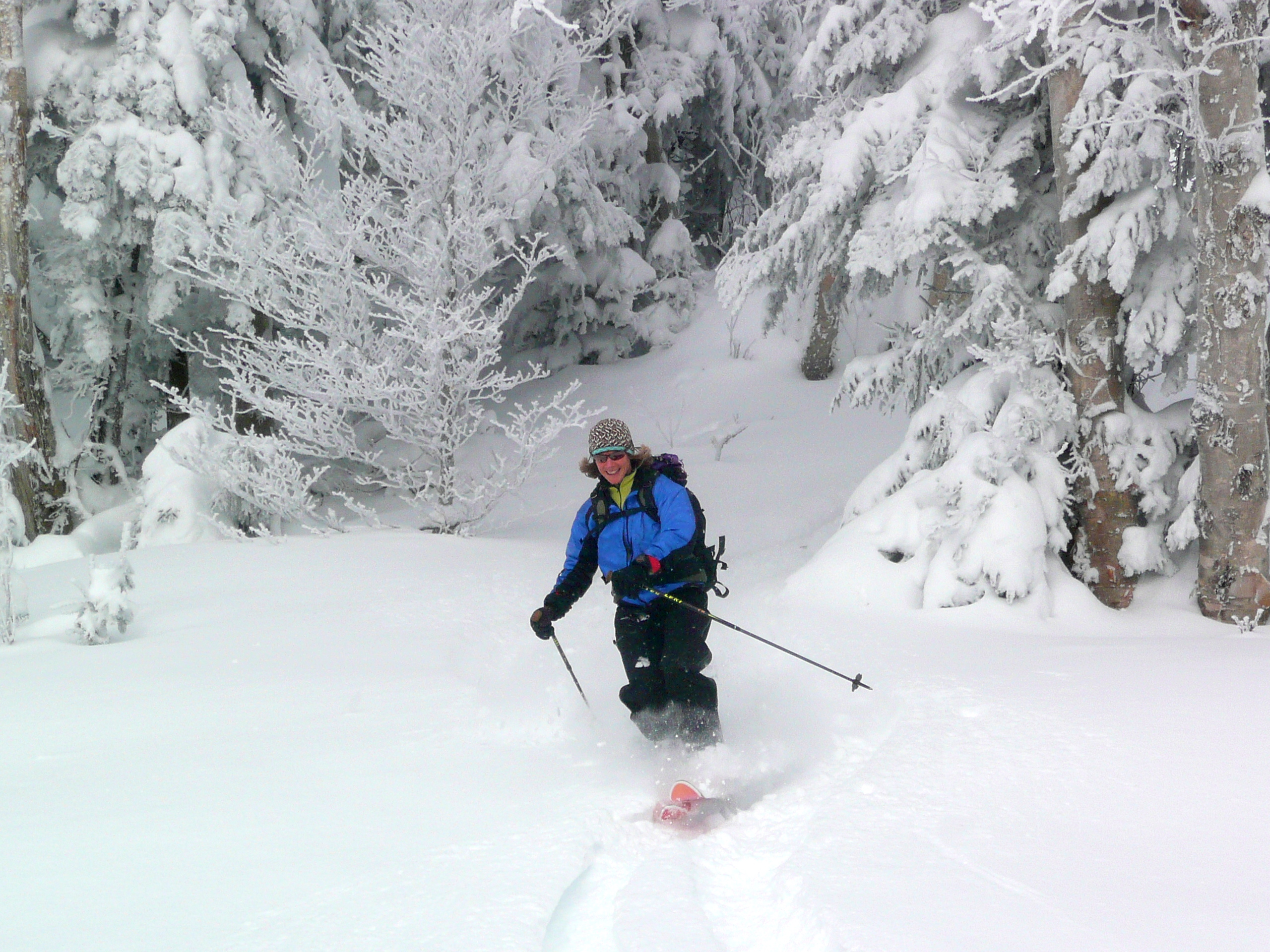
Minter’s plan also calls for recruiting more outdoor businesses to Vermont, appointing a state-wide Outdoor Recreation Director, creating an integrated state-wide mountain biking network, mapping and promoting existing trails, providing incentives to landowners to host new trails, encouraging women and youth to hunt and fish, and building out the last six miles of the Long Trail. For another politician, that might sound like the equivalent of currying favor with every special interest group that ever took a walk in the woods. For Minter, it’s simply about protecting and promoting what brought her to the state in the first place.
Twenty-five years ago, Sue Minter was getting her graduate degree at MIT, playing on a nationally-ranked Ultimate Frisbee team and working on Boston’s first recycling program when her then-boyfriend, David Goodman, kidnapped her and drove her to Vermont. They drove to Smuggler’s Notch, hiked up the Long Trail and at the summit of Mt. Mansfield, Goodman, a journalist Minter had been dating since they were undergrads at Harvard, went down on one knee and proposed. A year later, they moved to Waterbury Center. He was working on his first backcountry ski book, Classic Backcountry Skiing: A Guide to the Best Ski Tours in New England, and she had a fellowship to work as a staff scientist with the Conservation Law Foundation.
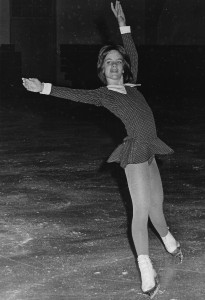 “The time just seemed right and we decided we’d come to Vermont for a year,” Minter recalls. That was 1991 and they never left. Vermont was not new to Minter. “We used to come up to Stowe for vacations and stay at an inn behind what I think is now the Round Hearth,” she remembers. Her father , Bob, had a candy business, Minter’s Candies, and her mother, Evelyn, had been a skater with the Ice Follies. Growing up with three older brothers in Bryn Mawr, just outside of Philadelphia, Minter started ice skating at age four. By 16, she had earned a gold medal—figure skating’s equivalent of a black belt—and was good enough to have to make a decision: move to Lake Placid and train for the Olympics or “have a life” and continue in her school. Her pairs skating partner, Scott Gregory, chose the Olympic training path and went on to compete in the 1984 and 1988 Olympics.
“The time just seemed right and we decided we’d come to Vermont for a year,” Minter recalls. That was 1991 and they never left. Vermont was not new to Minter. “We used to come up to Stowe for vacations and stay at an inn behind what I think is now the Round Hearth,” she remembers. Her father , Bob, had a candy business, Minter’s Candies, and her mother, Evelyn, had been a skater with the Ice Follies. Growing up with three older brothers in Bryn Mawr, just outside of Philadelphia, Minter started ice skating at age four. By 16, she had earned a gold medal—figure skating’s equivalent of a black belt—and was good enough to have to make a decision: move to Lake Placid and train for the Olympics or “have a life” and continue in her school. Her pairs skating partner, Scott Gregory, chose the Olympic training path and went on to compete in the 1984 and 1988 Olympics.
The following year, Minter’s world was uprooted. Her father took a new job in Providence, R.I. and she found herself at Moses Brown, a day school founded by Quakers in 1784. The school had only started taking girls two years earlier and there were still no women’s sports teams. Minter decided to change that. She founded a soccer team and recruited girls from neighboring schools to form a lacrosse team. Then she ran for student council president—the first and only girl to do so—and won.
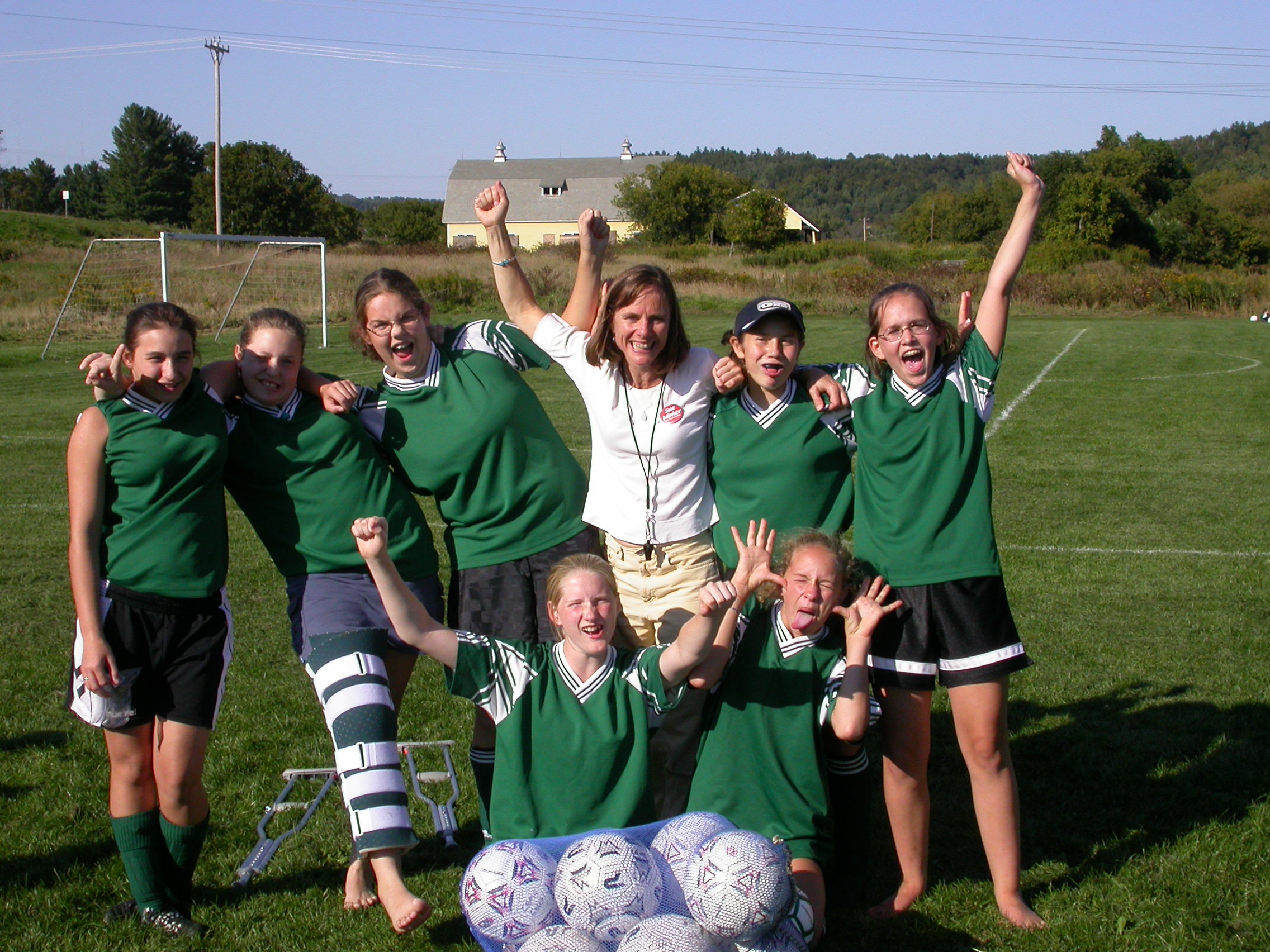 “Sue just had this energy and enthusiasm about her,” remembers Belle McDougall, one of the girls recruited to play lacrosse. “You just wanted to be part of what she was doing.” Minter went on to Harvard where she studied sociology and played lacrosse on the junior varsity team until she was bumped up to varsity to play in the Nationals. After graduating in 1983, she pursued a graduate degree in urban planning at MIT. Around that time, she recognized that Boston had a problem with trash so she started a program for curb side newspaper pickups. It was the city’s first recycling program and earned her an award from then-governor Michael Dukakis.
“Sue just had this energy and enthusiasm about her,” remembers Belle McDougall, one of the girls recruited to play lacrosse. “You just wanted to be part of what she was doing.” Minter went on to Harvard where she studied sociology and played lacrosse on the junior varsity team until she was bumped up to varsity to play in the Nationals. After graduating in 1983, she pursued a graduate degree in urban planning at MIT. Around that time, she recognized that Boston had a problem with trash so she started a program for curb side newspaper pickups. It was the city’s first recycling program and earned her an award from then-governor Michael Dukakis.
Protecting the environment had become a passion for Minter so when the opportunity arose for a fellowship with the Conservation Law Foundation she jumped at it. In those early years in Vermont, Minter and Goodman spent a great deal of time exploring. “David’s book was all about rediscovering these lost trails from the 1940s and 1950s that had been built by the Civilian Conservation Corps. I can remember so many crazy adventures. I remember one time being up on Mansfield and it was snowing and the woods were really thick looking for the Tear Drop trail. All of a sudden, we found it: part of an old sign on a tree with just an E and an A visible.” Today, that trail is one of the regular backcountry routes off the west side of Mt. Mansfield. [Goodman has gone on to write numerous books on topics such as apartheid, whistleblowers and political corruption, including three New York Times bestsellers with his sister, Amy Goodman, the host of the radio show, Democracy Now!]
Ask Minter what her favorite ski routes are today and she doesn’t hesitate. “There are so many great places here, especially on Mt. Mansfield, but because Camel’s Hump is always in view from my home, I’ve always loved skiing that mountain. One of my earliest backcountry ski adventures—we’re talking the 1980s—was there. It’s a long ascent and the top is always howling windy and icy, but there are more and more good descents and secret powder runs.
I’ve always come down the Duxbury side but as a state rep I started doing an organized tour around Camel’s Hump that’s a fundraiser for Alzheimers and I discovered some great routes on the Huntington side as well,” she says. The “Tour” is a five- to eight-hour slog. “Skiing in the backcountry brought us here,” she says and adds, “and kept us here.” As kids came along—first Ariel, now 23 and Jasper, 16—Minter spent more time coaching, first skating at Stowe’s Jackson Arena and then soccer at Harwood Union. “Sue would put on this ‘ice theater’ which anyone could be part of,” recalls Lisa Hagerty, a Stowe skater who went to Harvard with Minter. “Suddenly figure skating wasn’t just about an individual performance but about a whole group of people creating something. That’s her style,” Hagerty says.
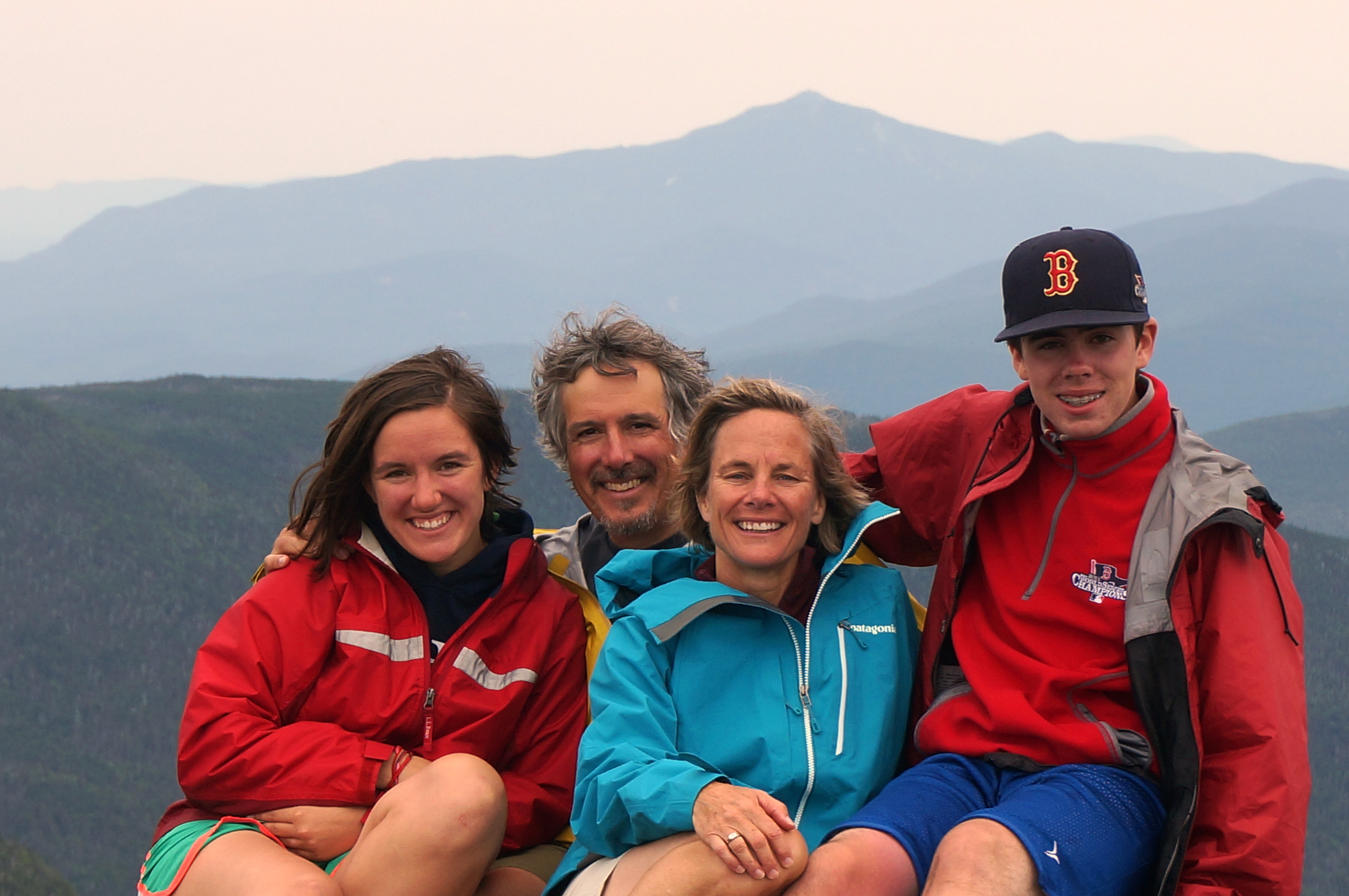 Both of Minter’s children have been pursuing careers in journalism. Ariel, who graduated from Harwood Union High School and went to Oberlin, works for public radio. Jasper is in high school but moonlights as a sports analyst for WDEV and writes a column in the Barre Montpelier Times Argus.
Both of Minter’s children have been pursuing careers in journalism. Ariel, who graduated from Harwood Union High School and went to Oberlin, works for public radio. Jasper is in high school but moonlights as a sports analyst for WDEV and writes a column in the Barre Montpelier Times Argus.
Politics called in 2004 and Minter ran for state representative for Waterbury, Duxbury, Huntington and Buel’s Gore and served until 2010. As a state rep, Minter worked to promote trails, ranging from getting grants to make a nature trail handicapped-accessible to extending mountain bike trails. “Trail building was part of our economic development strategy for Waterbury, and it has helped us grow,” she says. One of her dreams is a mountain bike trail system that extends from Waterbury, via Little River State Park, all the way to Stowe. “An investment in Little River is really important, since there’s been a real increase in visitors there,” she told the Waterbury Record in 2010. “We’re working on what would be a real mecca for mountain biking,” Minter said. This September, the ribbon was cut on three miles of trails through that park.
In 2011, after Tropical Storm Irene devastated much of Waterbury, Governor Shumlin tapped Minter to be the Irene Recovery Officer. Her work there led to a position as Deputy Secretary of Transportation (and in 2015, Secretary). It also led Governor Shumlin to tap her for the White House Task Force on Climate Preparedness and Resilience, where she co-chaired the Subcommittee on Disaster Recovery and Resilience. Protecting the environment and fighting climate change are two key points in her campaign. She has promised to invest in clean water infrastructure and research, cut carbon pollution from transportation and reduce Vermont’s peak demand for electricity by 10 percent.
As Secretary of Transportation, Minter often commuted by bicycle from her home in Waterbury Center to her office in Montpelier and she worked hard to make it easier for others to ride to work as well. Under her leadership, the agency worked with 2100 Strava users to create a Wiki map of bicycle corridors around the state and sought ways to improve the shoulders and bike lanes.
So what would Minter do for Vermont Sports readers? “As Governor, I will be a champion for our world-class recreational landscape,” she says. “Not only for skiing and snowboarding but for mountain biking and hiking trails, golf courses, skateboard parks, sailing, hunting and fishing and so many other outdoor activities,” she says. “Our vibrant outdoor culture not only provides good jobs and boosts tourism, it attracts young people looking for communities with a healthy outdoor lifestyle.”
Just like it did for Minter, 25 years ago.

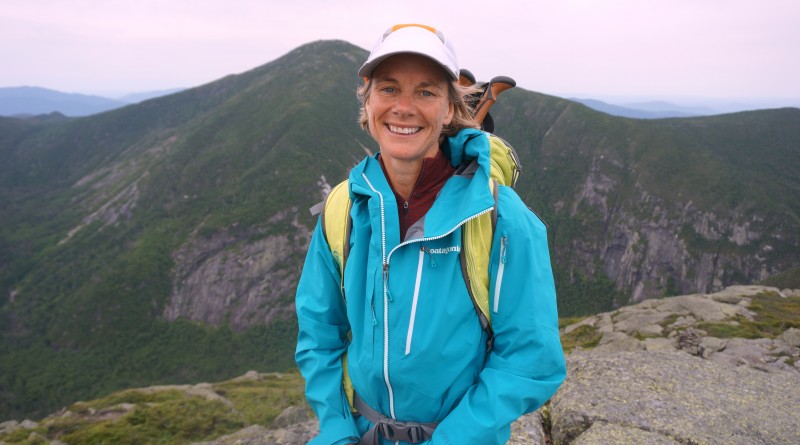
Pingback: Who is the Fittest Governor? - Vermont Sports Magazine
Pingback: Sue Minter: A Freeheelin' Governor? - VT SKI + RIDE